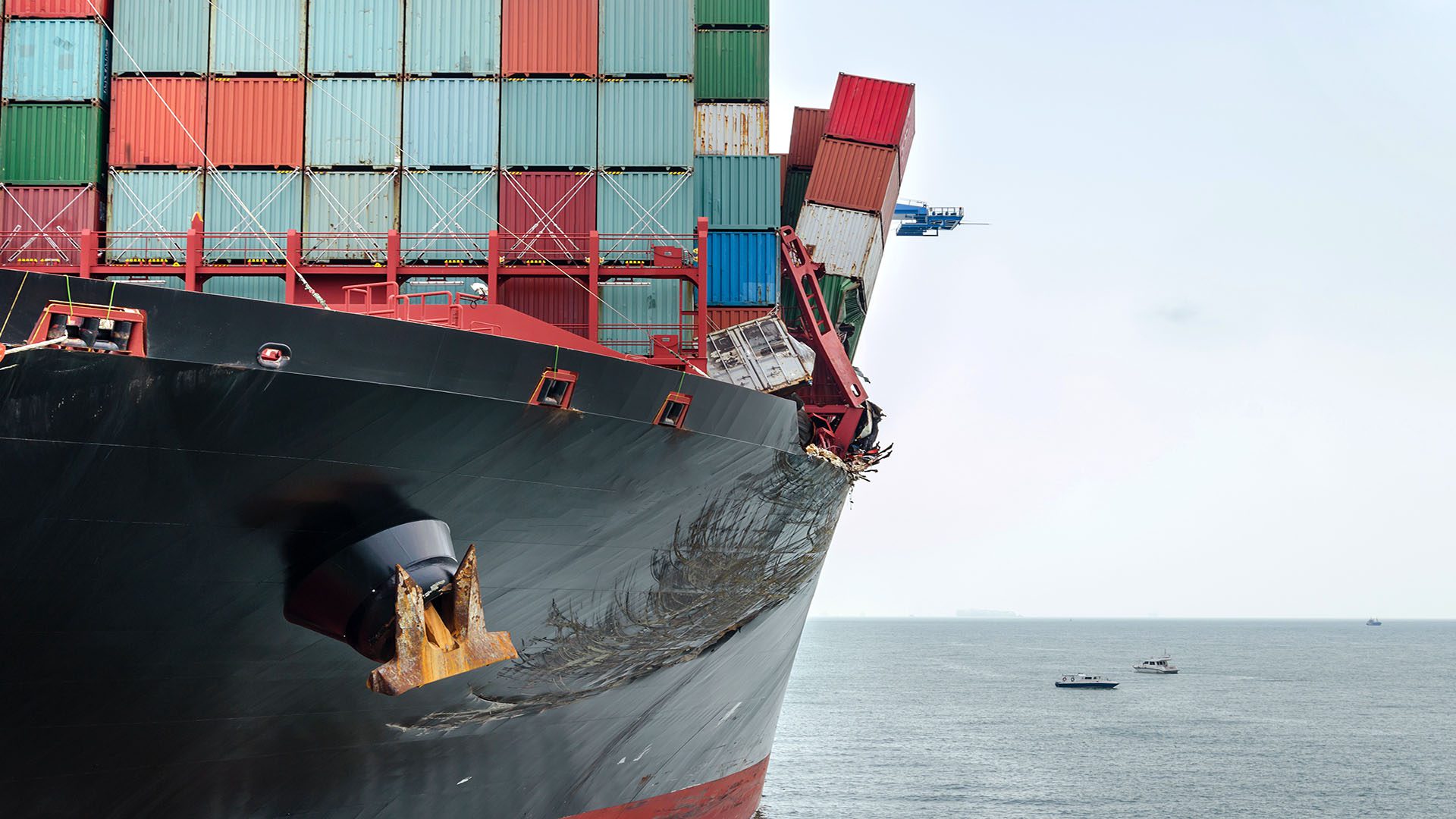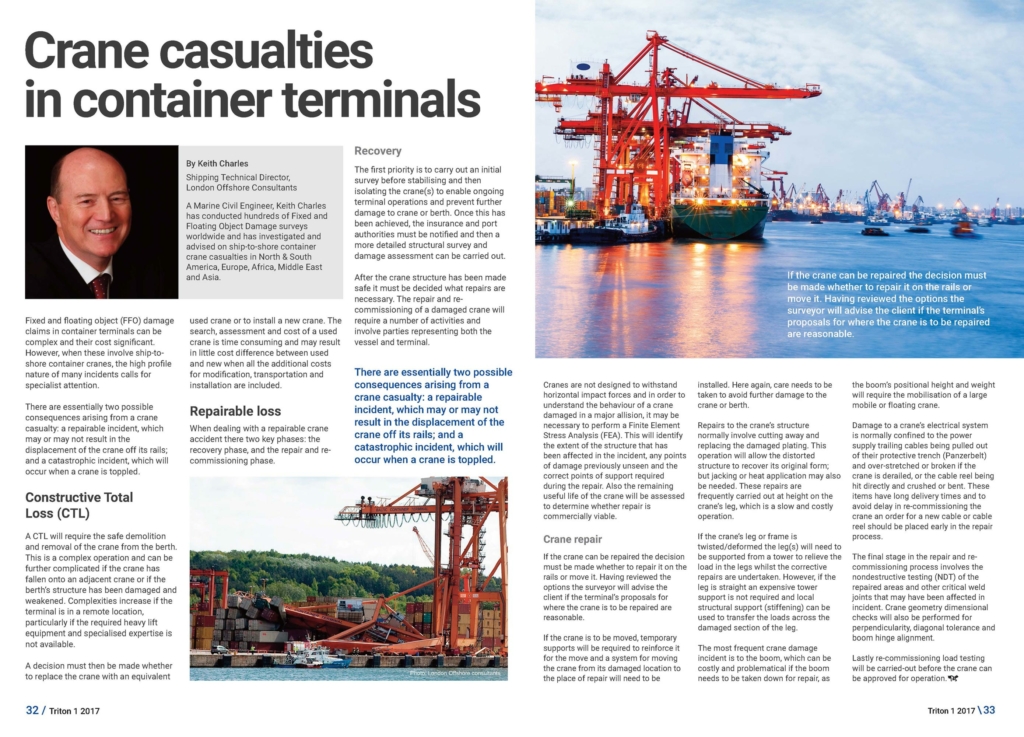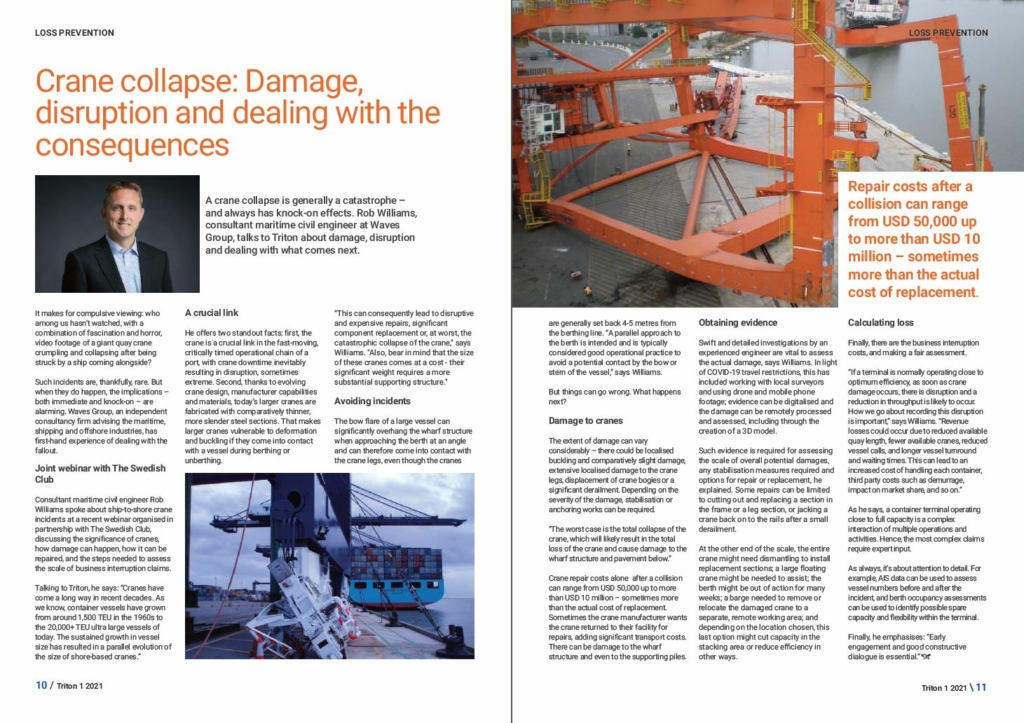
Contact Damages
Damage caused by vessel coming into direct contact with, for example, a dock, pier, jetty, buoy or crane, or the damage caused by the vessel’s wash. In many instances the loss of use claim from the harbour is in excess of the repair cost for the actual contact damage.
Shore gantry cranes are built for horisontal loads and will easily be severely damaged by a vertical impact. Cost of repairs to shore gantry cranes are very high.
Facts and Findings
Contact damages are, in our exprerience, mostly caused by:
- adverse weather conditions during berthing/unberthing,
- improper judgement by master or pilot,
- improper speed,
- insufficient tug assistance and/or machinery failure.
Preventive measures
- The crew must understand the importance of adherence to the bridge management procedures.
- Assess the prevailing conditions, berth restrictions and any other limitations before entering or leaving port.
- The master is in command of the ship at all times and may delegate the conduct of the ship to a pilot if he finds him experienced and competent. The master should not hesitate to supervise, question or overrule the pilot’s decision if any indications of problems arise.
- Master and pilot should agree on a berthing plan, tug assistance and language to be used between ship, pilot, tugs and shore.
- The pilot should be presented a completed pilot-card. The vessels manoeuvring characteristics should also be communicated.
- When entering or leaving berth special attention to shore gantry cranes must be taken to ensure that they are not hit by for example vessels flare or mast.
- Damage to light buoys and other navigational aids must be reported immediately so that other ships are not put in danger.
Crane casualties
Fixed and floating object (FFO) damage claims in container terminals can be complex and their cost significant. However, when these involve ship-to shore container cranes, the high profile nature of many incidents calls for specialist attention.


